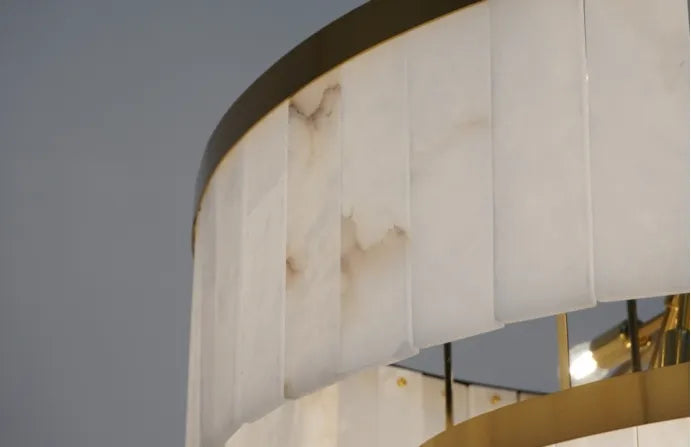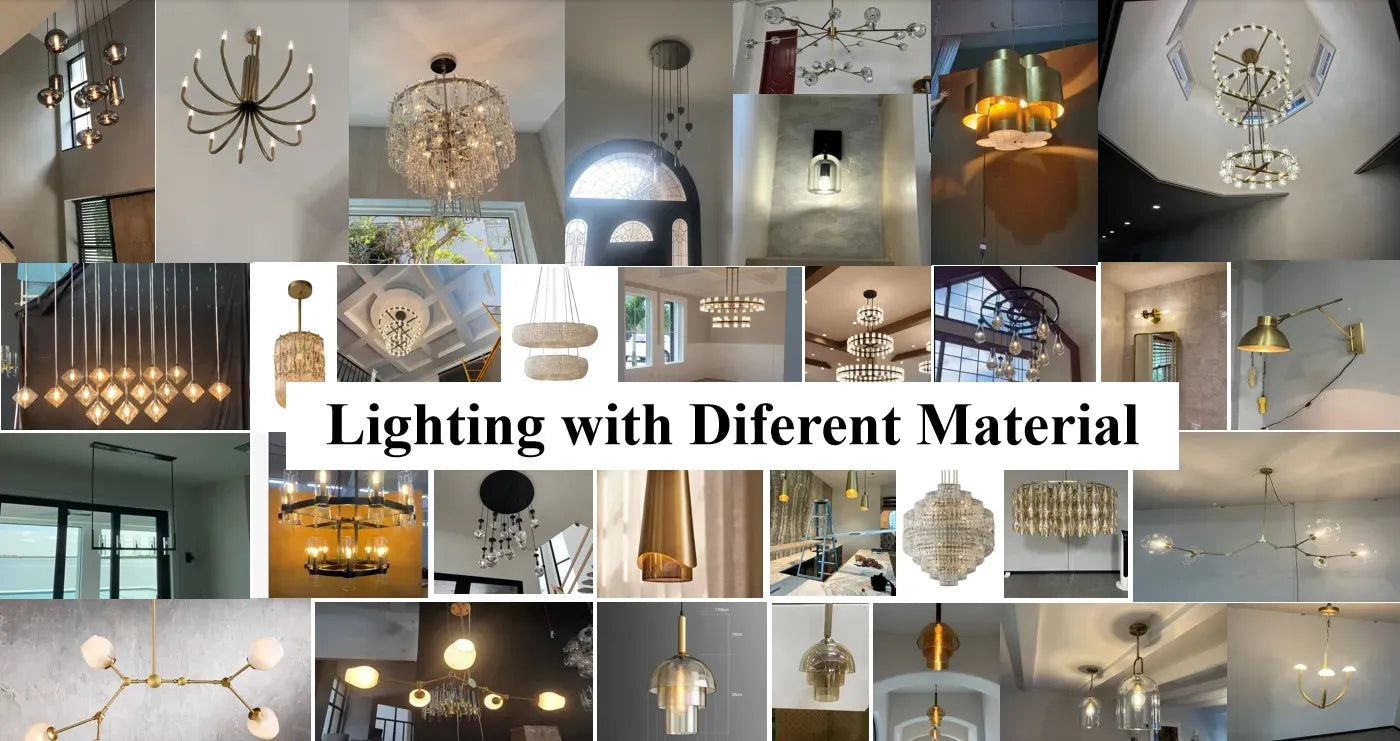Alabaster is a beautiful, natural stone often used in lighting fixtures, sculptures, and decorative items. It comes in two main types: with veins (veined alabaster) and without veins (pure alabaster).

(The picture shows unprocessed natural marble)
Here are the key differences, advantages, and disadvantages of each:
Veined Alabaster
Veined alabaster features natural veins or streaks of color running through it. These veins can be in various colors, such as grey, brown, or yellow, and they add a unique, organic appearance to the stone.

Advantages:
- Aesthetic Appeal: The veins give each piece a unique look, adding character and individuality. No two pieces of veined alabaster are exactly the same.
- Natural Beauty: The veins highlight the natural origin of the stone, making it a desirable choice for those who appreciate organic and earthy designs.
- Decorative Value: Veined alabaster can serve as a focal point in a room due to its distinctive appearance, making it suitable for artistic and decorative purposes.
Disadvantages:
- Uniformity: The variation in veining means that achieving a uniform look in a large project can be challenging.
- Perceived Quality: Some people may view the veins as imperfections, which might affect the perceived quality depending on personal preferences.

Pure Alabaster
Pure alabaster, also known as white or solid alabaster, is free of veins and has a uniform, smooth appearance. It is typically a translucent white or off-white color.

Advantages:
- Consistency: The lack of veins provides a consistent look, which is ideal for projects requiring uniformity and cohesion.
- Elegance: The smooth, unblemished surface of pure alabaster gives it a clean and elegant appearance, suitable for minimalist and modern designs.
- Versatility: It can easily blend with various interior styles and color schemes due to its neutral and consistent look.
Disadvantages:
- Less Character: The absence of veins might make pure alabaster appear less interesting or unique compared to its veined counterpart.
- Potential for Stains: Without the natural distractions of veins, any stains or discolorations are more noticeable.

Summary
- Veined Alabaster: Offers unique and natural beauty with a varied appearance, but may lack uniformity and can be more expensive.
- Pure Alabaster: Provides a consistent, elegant look, but may appear less interesting and shows imperfections more readily.
The choice between veined and pure alabaster largely depends on personal preference and the specific requirements of the project. Veined alabaster is ideal for those who appreciate natural variation and uniqueness, while pure alabaster suits those who prefer a clean, consistent look.
Contact Us
Below are our contact details. Feel free to reach out to us!



